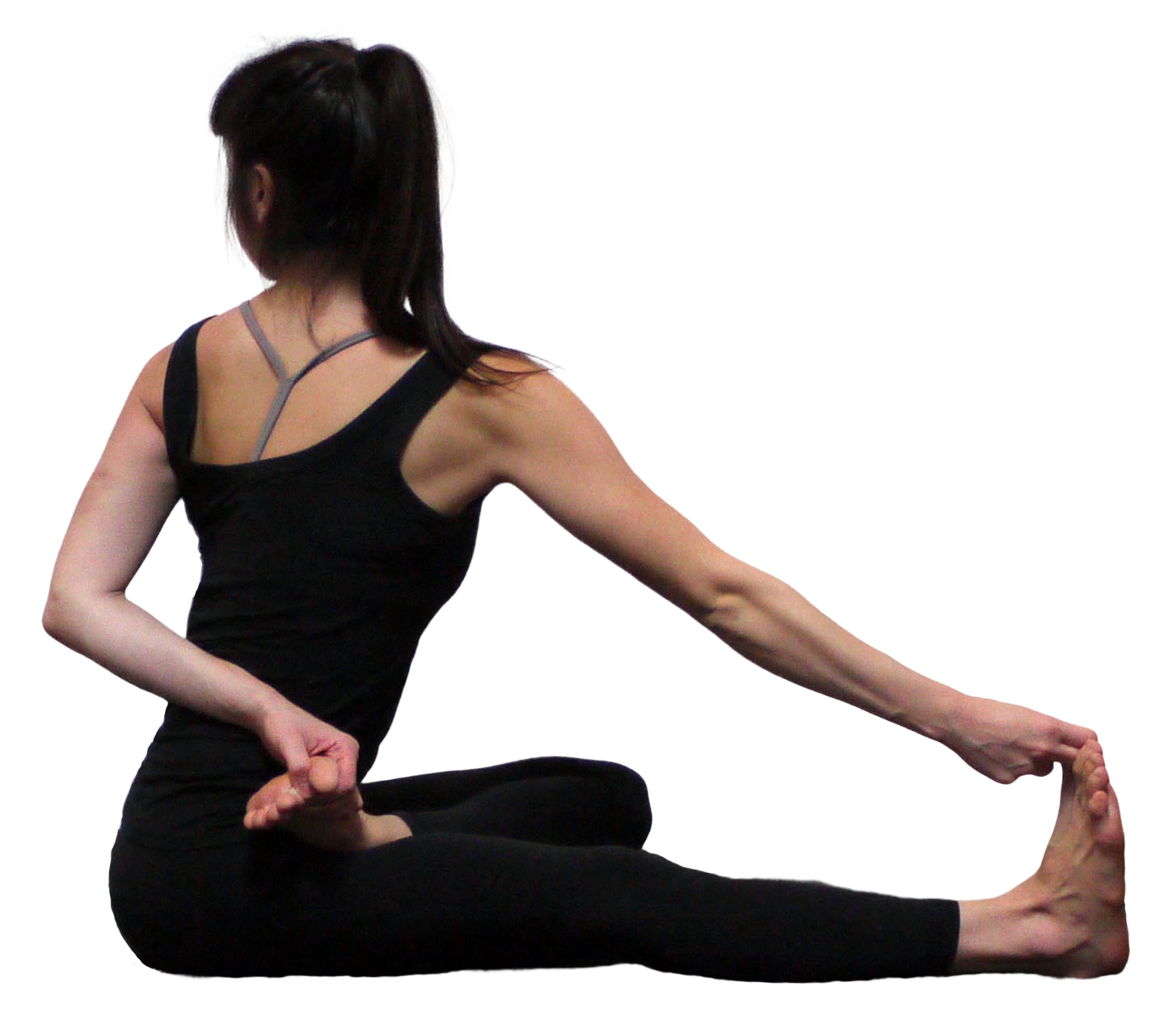Common muscular imbalances that affect the knee in Yoga
In my experience, one of the most common set of muscular imbalances that affects peoples knees in yoga is excessive tightness in the outside muscles of the leg (i.e. the outer foot, calves, thighs and hips).
If you have this particular set of tightness you may find your knee is not comfortable in many of the seated yoga postures where you have to bend your knee and in particular poses such as Virasana (Hero pose) and Ardha Padmasana (Half-lotus) will not feel comfortable.
Outer leg muscles that can become tight.
Virasana
Ardha matsyendrasana variation
Many people have these imbalances before they even start practising Yoga. Others may develop it from their Yoga practice as a result of too much emphasis on certain postures, lack of counter-posing of those postures as well as exclusion of some important functional yoga postures.
THE 4 MOVEMENTS OF THE KNEE
The knee joint is capable of:
- flexion (bending)
- extension (straightening)
- lateral rotation (eg. the tibia/shin turning outwards while the femur stays still)
- medial rotation (eg. the tibia/shin turning inwards while the femur stays still
When the muscles on the outside of the lower leg, upper leg and hip are excessively tight it can cause:
- pronation of the foot (the inner arches of your feet drop)
- excessive lateral rotation of the knee
- difficulty medially rotating your knee
As I mentioned earlier, you will notice the impact of this when you practice Yoga postures where the knee is fully flexed (bent). This imbalance of the muscles of the legs and hips, if not corrected, can lead to problems later in life with your ankles, knees and hip joints. The reason for this, is that it is changing the way the joints move and placing excessive load in certain areas. This can lead to excessive wear and tear over time.
WHICH POSES PERPETUATE THIS IMBALANCE?
Postures such as Virabhadrasana 1 and 2 are great for strengthening these outer leg and hip muscles. We all need to be strong in these. However, if they are not adequately counter-posed they can create excessive tension. It seems, in many of the modern Vinyasa Flow Yoga classes there is an overemphasis on Warrior postures and due to the short class times (only 1 hour) there is not enough time left to adequately counter-pose them. This overemphasis can lead to knee issues for practitioners. We should definitely include these postures in our practice, but not to excess.
Virabhadrasana 1
Virabhadrasana 2
HOW SHOULD YOU COUNTER-POSE THEM?
In Yoga, the Sanskrit word for counter-posing is Pratikriyasana. Many people think to counter-pose means to do the opposite. But this is not the full definition. Each posture we practice has some functions and benefits. It also may leave us with some unwanted side effects if we do not counter-pose properly.
In this instance, Virabhadrasana 1 and 2 are very strengthening for the outer leg muscles, which is a benefit, but if we don’t release some of this tension it will create tightness in these muscles resulting in misalignment of the knee joint over time.
The following postures are a few examples:
Parivrtta trikonasana - lengthens the outer hamstrings and hip muscles
Jatahara parivartanasana - lengthens the outer hip and thigh muscles
Sukasana forward - lengthens the outer hip and thigh muscles
Triangmukaikapada paschimottanasana - lengthens the quads and stretches the top of the foot
Vajrasana - lengthens the quads and stretches the tops of the feet
WHICH POSTURES SHOULD YOU INCLUDE IN YOUR PRACTICE TO KEEP THESE OUTER FOOT, LEG & HIP MUSCLES SOFT?
As well as the above postures, keeping the feet, ankles and lower legs supple is important. You can see with young children they have no difficulty with the following postures. As we get older we become not only tighter in our muscles but the fascia becomes contracted as well.
To stretch the undersides of the feet and the toes
To stretch the tops of the feet and thigh muscles
To keep the ankles supple
If you do have tightness it will be very likely that these postures will be challenging - so use props to ensure you don’t injure yourself and work towards improving gradually over time.
written by Jean Campbell
Interested in learning more about how anatomy relates to yoga practice?
Have a look at my Online Dynamic Yoga Anatomy Course.













